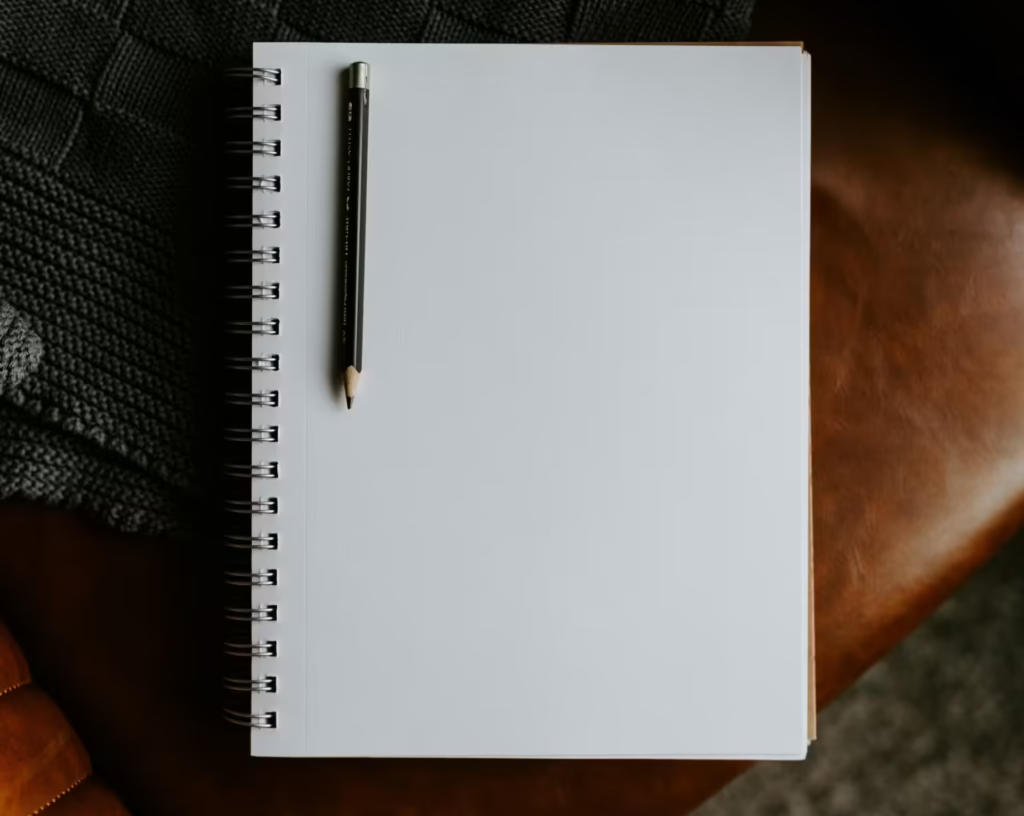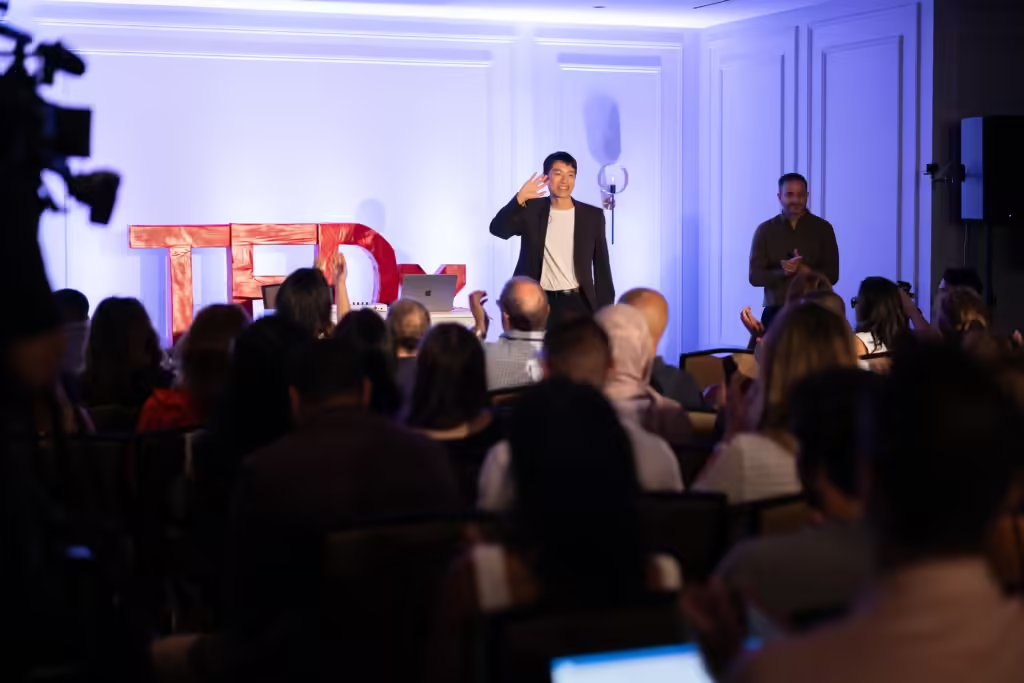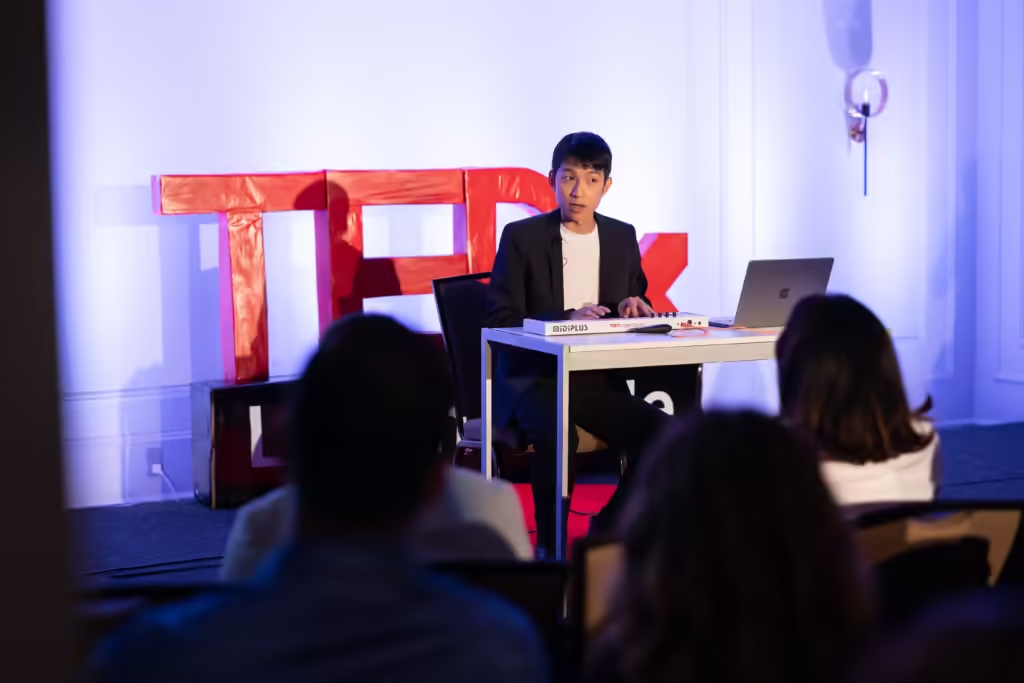Check out my TEDx talk by clicking here.
This is Episode 3 in my TEDx journey series. In case you missed them, here are the previous entries:
What I tell all my public speaking clients is this: your role as a speaker is to take the load off your audience.
- A slide with minimal text is harder for you to deliver (compared to one with everything typed out). But it’s so much easier on your audience’s eyes.
- A presentation that has blood, sweat, tears, oil, grease, and fire put into its refinement and rehearsal is an odyssey for you. But a seamless and effortless journey for your audience’s attention.
The goal for my TEDx talk was to fulfill this philosophy to its extreme. And that made it an absolutely herculean task. This is the story of Draft 1.
After I got the acceptance for TEDx Logan Circle, I was not just ecstatic and overwhelmed and overjoyed. I was also over-zealous.
An (unfortunate) habit I bring from my school days is doing work *way* in advance. Yes, I was the nerdy kid who already had an essay planned out … before it was even assigned.
So when I applied for TEDx, I had my talk sketched out to the letter:
Theme
Data is often communicated in a confusing, boring way that fails to engage and inspire. We can communicate data better by making it more “musical”: focusing on how it relates to human experience.
Fun Introduction
Play some noisy notes on the piano, like the sound of a car horn. Hint that data sounds like similarly horrible noise to many non-technical audiences
Segue to Music
Talk about how I got into music and what makes music more engaging than noise: it’s typically well-structured with moments of tension and release. For example, let’s consider a pop song like Taylor Swift’s “Blank Space”:
- 1. It starts with a “verse” section highlighting a new relationship she might be starting.
2. Then it builds to a “chorus” section where that relationship goes down in flames.
3. Then it simmers down to another “verse” where she talks about the relationship again
4. So on and so forth…Application to Data
Talk about how data can be structured in a similar way, by putting numbers in relatable context instead of just throwing them out one after the other. For example, instead of saying “30% of people have condition X”, you can say:
- “Look at the person on your left and right. One of them – or yourself – statistically might have condition X”.
Bringing It All Together
Punctuate the thesis that principles from music theory can make our data communication more interesting and more inspiring to all kinds of audiences
Seemed like a green light to me! But something I also tell my public speaking clients is this: you can’t see yourself.
When you drive, no matter how many years you’ve been behind the wheel, you have blind spots. You need to physically turn your head when changing lanes because neither your peripheral vision nor mirrors can help you see those critical areas.
Public speaking is the same: you cannot see the faulty glue holding certain parts together or the slightly smudgy spot on the glass. Because from your point of view, everything may look perfect.
I was given the amazing opportunity to workshop my talk with the TEDx organizer Monica and that’s where I found my biggest blind spot:
There wasn’t enough “me”
Unlike my standard conference presentations, where I rarely shared personal stories (except several in 2024 where I threw some in for humor), a TEDx talk is tailor-made for them.
A TEDx talk needs to be one only *you* can give.
If I wanted the audience to connect with me and remember my topic, I needed to weave my story throughout its heart.
I took a long walk after that meeting. It was a hideously sweaty Washington DC afternoon. But as I walked past the famous DC monuments and listened to the ever-present choir of blaring city car horns, I started to piece together the key stories for TEDx Talk Draft 2:
Why music means so much to me:
As a shy kid, I couldn’t speak to my crush. But I gathered the courage to serenade her with some music of my own
Why I become a composer:
After my previous success with music, why not keep going? I began to write music for short films
Why I made the difficult choice to leave music for the data industry:
Making money from the arts is not an easy path. I had to find a way to more consistently support myself
Why I see this odd connection between music and data:
When I analyze data and tell a data story, I still have my “music hat” on. I believe a data presentation, like a piece of music, should move people with emotion to see the world a different way.
Coming up next in the series is Episode 4: “Why My Second TEDx Draft Was Worse Than The First”…
Before getting to the end of the series, you can also check out the TEDx talk below!



